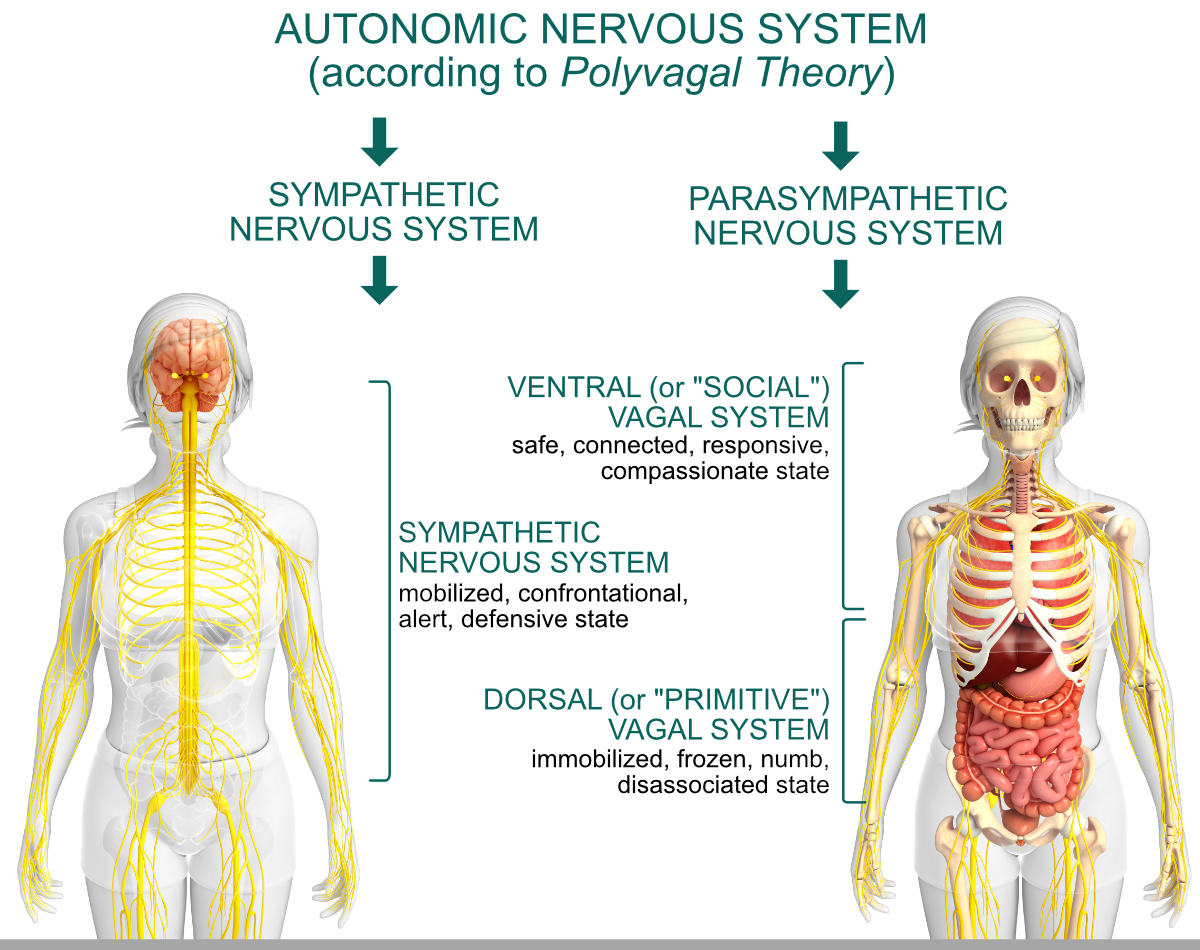Picture this: the day winding down, a gentle glow casting a calming shade on the road as I drove home from work. Little did I know, this drive would turn into a story about the polyvagal theory—a way to explain how our body reacts emotionally.

In my world, the road was like a peaceful painting. I drove with ease, matching the speed limits, and my pace went along with the journey’s rhythm. This is thanks to the ventral vagal branch of my vagus nerve, which keeps things calm and promotes social engagement.
But behind me, a different scene was playing out. An impatient driver expressed frustration with honks and upset. This is like their body’s alarm system (sympathetic nervous system) gearing up for a fight-or-flight response.
Amidst this commotion, my response was laughter—a choice that came from both my body and mind. The ventral vagal branch took the spotlight, promoting calm and social engagement. It turned a potentially chaotic moment into a more relaxed melody.
Different Reactions, Different Paths:
Looking at these different reactions, it’s clear that how we feel shapes our journeys. The upset driver, caught up in stress, experienced a less harmonious time, while my laughter created a more peaceful response to life’s challenges.
Polyvagal Harmony in Everyday Life:
This road encounter is like the everyday story of the polyvagal theory. It’s a way to understand how our body reacts emotionally. It reminds us to recognize these reactions, understand how they affect our experiences, and know we have the power to choose our emotional tunes.

Why Our Feelings Matter
Our emotions are more than just reactions; they’re key parts of our daily stories. They impact our well-being, relationships, and how we see life. Learning about the polyvagal theory is like having a guide to navigate these emotional responses, helping us create more peaceful moments even when things get tricky.
So, as life’s journey unfolds, let the polyvagal beat be your emotional guide. Pick the notes that bring you calm, and remember, in the grand story of daily life, you’re the one holding the conductor’s baton.
